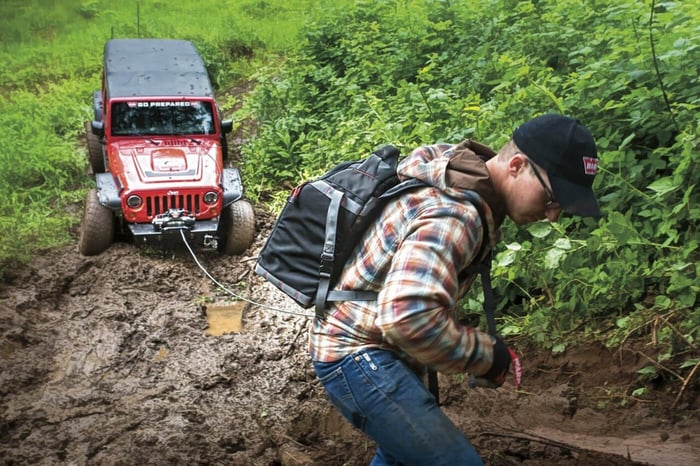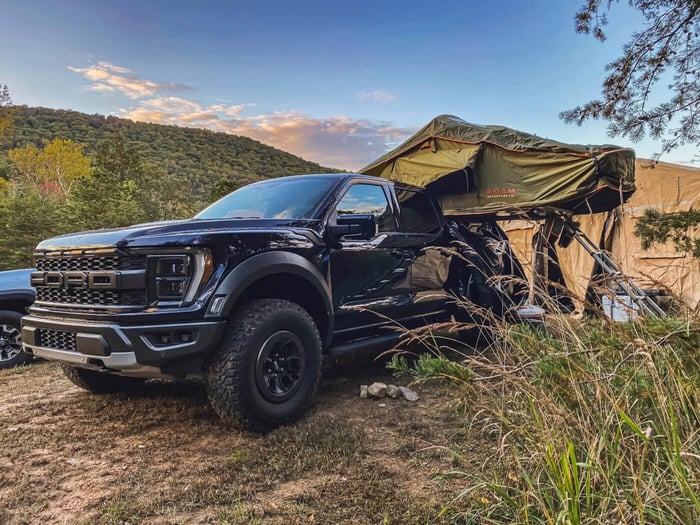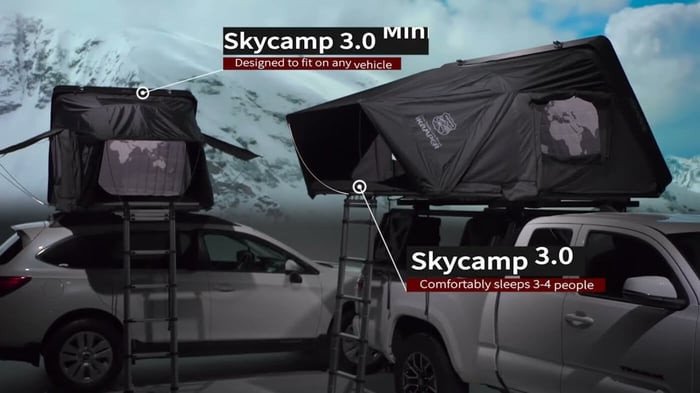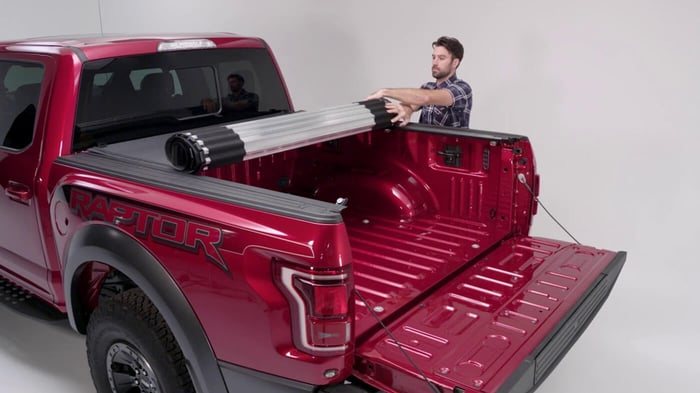
Recovery 101: Best Off-Road Recovery Aftermarket Add-Ons
Think of your recovery gear as the really good idea you have at home before a not-so-good idea happens out in the field. Every off-roader has either made an error in judgment or happened upon someone else’s error in judgment, resulting in a stuck or damaged vehicle that needs a little help to get back on the trail. That’s when your planning and preparation make a big difference to the outcome of the trip. We’ve talked before about the importance of having some recovery gear on hand every time you go out. Today, however, we really want to focus on a few specifics and the reasons behind them.
Staying Safe While Pushing The Limit
Not every error in judgment is bad. After all, we built a vehicle that’s meant for mud, rocks, rivers, and roughing it so we could challenge ourselves and get away from the safe, sanitary weekday life that’s missing something for most of us. If you want to try deep mud, you have to be willing to get stuck. You need to understand rock hopping is going to come with a few scrapes. That’s just how it is. Part of challenging yourself and your vehicle, though, is making sure you’re ready to get yourself out of the same trouble you intend to get into. Being able to help another off-roader along the way is just the icing on the cake. In both instances, planning out your recovery gear, putting together the fit that best suits your needs, and knowing how to use it is just as important as making sure you’re running the right tires for your trek.
Gear To Get You Back On Track
Every situation is unique, and experience is a better teacher than blogs when it comes to understanding what you still need in your kit. This is meant to give you some starting points, but there are recovery equipment and accessories for every application. If you need it once, you’ll likely need it again, so be ready next time. There are a few gear choices you will (or should) find in just about every off-road truck or SUV.
Off-Road Jacks
Sure, your vehicle probably came with a stock jack. It also came with small tires for driving on asphalt. When you need to lift up your vehicle off the road, you need something with the right blend of power and height, plus it needs to be able to work well on mud, dirt, sand, rocks, or wherever your travels take you. A Pro Eagle Kratos 3-Ton Big Wheel Jack is a solid, all-around choice. It stows neatly, maneuvers well, and will give you a good lift whether your vehicle has hard jack points or not. If you have a flat or just need a little lift to get some traction under a tire, the Pro Eagle can do it.
Your other option if your vehicle has hardpoints to accept a jack is a Hi-Lift Jack. Several models are available, including a 60” Hi-Lift Jack for vehicles with massive tires, big lifts, or lots of wheel travel. There’s a misconception that this jack style is dangerous, but properly used, it is a safe choice that adds flexibility to your recovery gear. In addition to lifting the vehicle for tire changes or building traction in the field, they can also be used as manual winches when you need a little extra help getting unstuck or need to apply pulling force in a direction different than an existing winch or snatch strap can apply.
Snatch and Go
A snatch strap is something we’ve all found ourselves on one end or the other of. This recovery kit basic helps you pull or be pulled out of a jam, and shouldn’t be confused with a tow strap. Tow straps are for slow, even pulling, while snatch straps are for the quick, hard tug that gets a vehicle moving again. As such, snatch straps are engineered to help build kinetic energy, then release it.
Bubba Ropes are the perfect example. Strong and stretchy, they accept the speed and force of a tug, building until they recoil, adding that force to your pull on the other vehicle. Choose the right strength of rope for your vehicle weight and the accessories that help you use it better. Chafe guards help ensure your vehicle or its attachment points don’t damage your snath rope, while extensions, adapters, and loops offer easier ways to attach your rope to a wider range of equipment and gear.
Hook It Up
Hooks and shackles are some of the most important parts of your recovery equipment. They’re the connection point between a rope, strap, or cable that’s getting you out of a jam and a vehicle you’ve spent a lot of time, money, and effort customizing. They better be up to the challenge, and the Factor 55 Ultrahook is. This USA-made hook is built for off-roading, with convenient hand grips, military-grade aluminum construction, and a shackle mount for easy, secure attachment to ropes or cables; it's the right tool for a solid hook and pull.
A good hook doesn’t mean there isn’t a place for D-rings or shackles, however. A few extra shackles, like the Rugged Ridge 11235 models can come in handy and take up very little space in your gear. They can help provide better connections when towing or snatching, prevent rope wear, and help redirect pull force if you need to adjust a pull angle. They may not be the most advanced off-road tech, but they’re easy to have on hand when needed.
Power Your Pull
A good winch will get you out of a tight spot when there’s no one around for miles, and WARN makes some of the best off-road winches on the market. The Warn ZEON 10S Platinum and Warn ZEON 12S Platinum offer 10,000 and 12,000 pounds of pulling capacity in the palm of your hand with a remote system that controls the winches and two accessories. You get instant feedback on battery drain and motor heat for more successful extraction, and can even engage or disengage the clutch with the USB-charged remote. With a large drum, 60- or 100-feet of Spydura synthetic rope, and a high-speed motor, you have a powerful tool to get you back on the trail again.
Get Some Air
Your tires are the only part of your vehicle that is meant to be in regular, semi-continuous contact with the ground. Once off the road, most of us drop some air pressure from the tires to make them a little “softer” and increase the surface area that’s in contact with the ground. A good air compressor, like the ARB CKMTA12, gets you ready to hit the road again when the day is done. Mounted under your hood, this powerful air compressor is made for airing up the big tires used on off-road vehicles. It’s also handy to have when you have to swap for a spare in the field and find out it’s running a bit low, even for off-roading.
Putting It All Together
If your kit is a little light and you’re looking at trying to pick up multiple pieces of recovery gear at once, be sure to check out our recovery kit section. Kits are a good way to check off your “Essential Off-Road Recovery Gear” list quickly and efficiently. As an example, the ARB RK9 Premium Recovery KIt gives you several of the snatching and pulling accessories we’ve talked about, along with some important safety gear, at a single low price.
Train For The Trail
If you buy your recovery gear, stow it in your cargo areas, on racks, or specialized mounts, and then forget about it until it’s needed, it will be ready, but you may not be. Familiarize yourself with all your off-road equipment–including recovery gear–so you know its limits. Use your truck jack to lift and change tires. Take a few moments on the trail to run a winch scenario. Look for opportunities to use your gear and get its efficient operation down. When an actual need arises, you’ll be glad of the practice.
Be Ready
Fill out your recovery kit with quality gear at a fair price, ready to ship from our US-based warehouses. If you need more info or want some help finding the right gear for you, call and talk to one of our pros anytime. Make sure you’re ready to play rougher with recovery equipment from Offroad Alliance.



